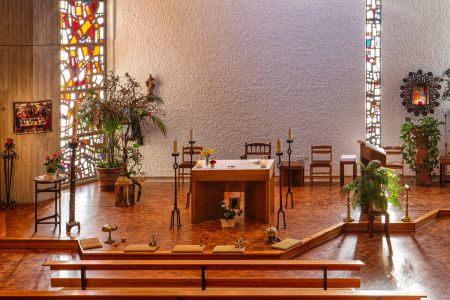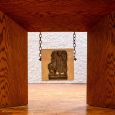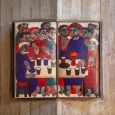Church | | Contemporary | Catholic Church




Map
Opening hours
01 January - 31 December
Mon 8.30 - 20.00
Tue 8.30 - 20.00
Wed 8.30 - 20.00
Thu 8.30 - 20.00
Fri 8.30 - 20.00
Sat 8.30 - 20.00
Sun 8.30 - 20.00
Description
The first mention of a church dates back to 1083 "ecclesia de Rode". As the old church became too small with the growth of the population, it was decided to build a new one. Today the old church serves as an exhibition space for temporary exhibitions organized by the municipality.
The new village church of Roodt an der Syr is one of the youngest sacral buildings in Luxembourg.
The foundation stone was laid in 1976 on the garden grounds of the Schmit siblings, and the completed church was consecrated on October 8, 1978. Architect: Ewert, Haagen and Schmit.
Thanks to the diligence of the "oeuvres paroissiales", the building and spatial conception, as well as the liturgical furnishings, an ensemble was created that impressively shows how a church opens itself to the formal language of modernity.
The architecture emphasizes the idea of the community that gathers here to celebrate worship, as emphasized by the liturgical reform of Vatican Council II. The simple and clear design invites the visitor to enter into contact with the ineffable, the divine You.
The bell tower stands separate from the church building and seems to go to the visitors by a few steps. The bells were cast in 1978 by Johann Mark&Sohn from Brockscheid in the Eifel.
Photos
Remarkable elements
Organ
The organ was made by Walker & Cie.
It was blessed in 1979 with a subsequent demonstration by Me Albert Leblanc.
Stained glass windows
The stained glass windows were designed by Georges Calteux and Ady Deville. The production of the 33 concrete glass windows was carried out by the Kaschenbach company in Trier.
the Stations of the Cross
The non-figurative Stations of the Cross with 15 stations, the only one in Luxembourg, was created by artist Roger Bertemes.
Mission Cross
The Mission Cross commemorates the popular missions carried out by the Redemptorist Fathers in the Grand Duchy from the second half of the 19th century.
During a special ceremony, this missionary cross was blessed and attached to the outside of the old church. Thus, the faithful could gather before it at any time and entrust their sufferings and joys to the Savior.
Altar
The celebration altar, the center of the church, is made of wood.
The altar stone, consecrated at the altar consecration, is not embedded in the altar table as usual, but is freely suspended under the table.























